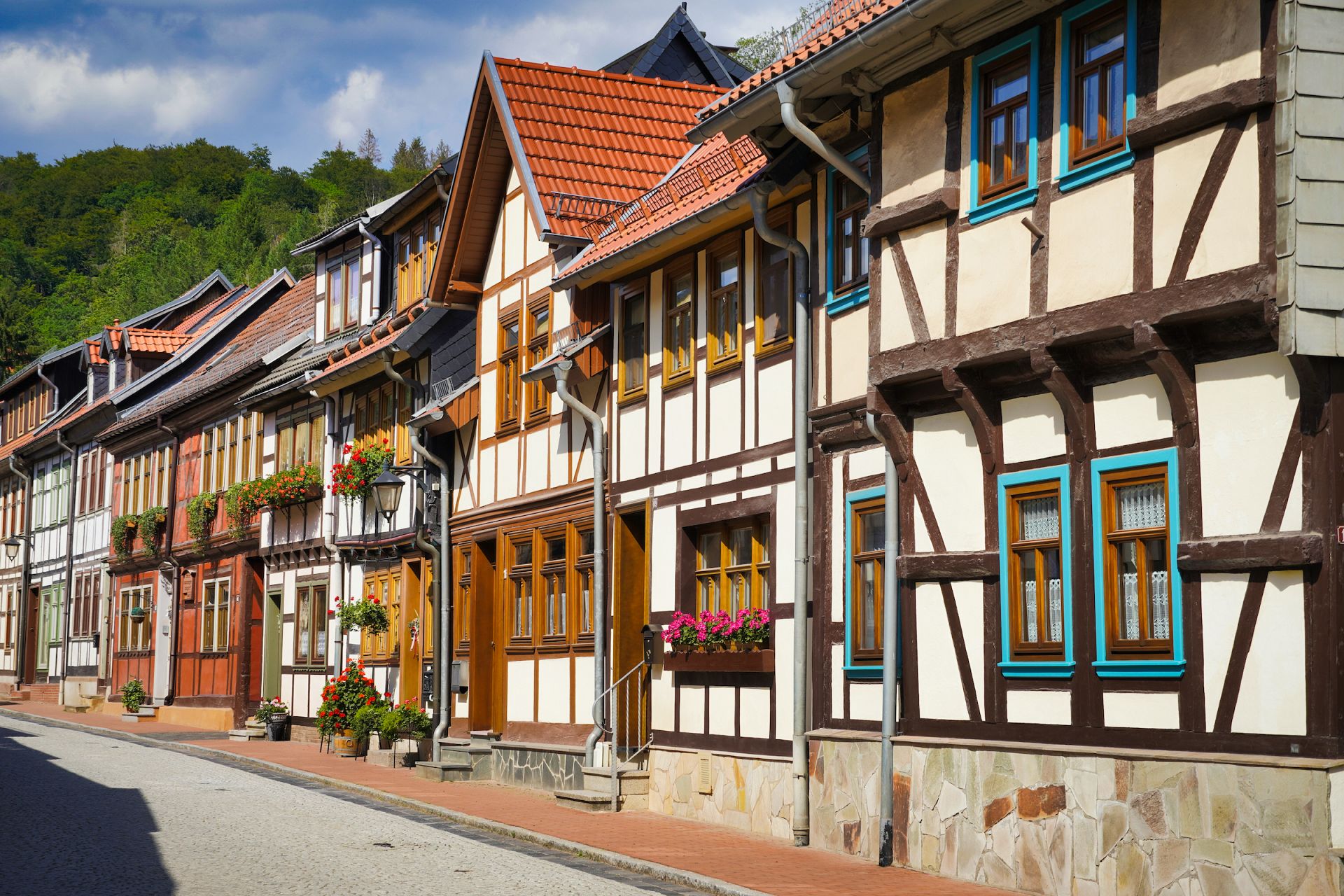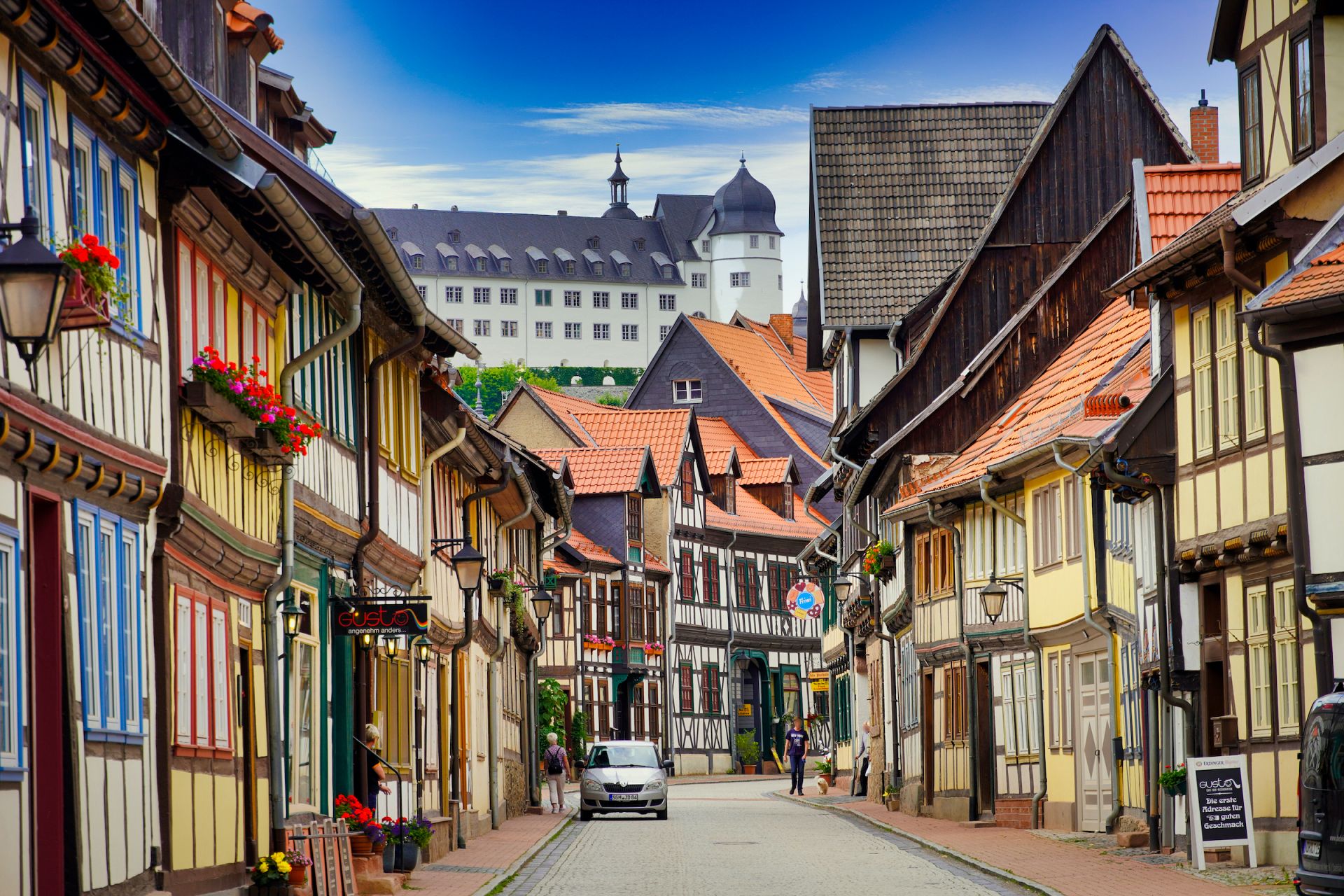The half-timbered town of Stolberg (Harz)
Stolberg's interconnected ensemble of almost 400 half-timbered houses nestles in four narrow valleys. This unique cultural heritage made the town the first in Germany to be awarded the distinction of "Historic European Town" and thus earned it supraregional significance. Here, visitors stroll between architectural marvels made of wood and timbering in the late Gothic and Renaissance styles. All in all, buildings from over six centuries can be admired. Stolberg Castle, the cradle of the Orange dynasty, towers high above the town with a view of the surrounding beech forests.
Special jewels of old architecture can be found on the market square, among other places. Here, the town hall dating from 1452 has a curiosity in store: There are no stairs in the multi-storey building. To get from one floor to the other, you have to use the outside staircase. Within sight, at Niedergasse 17, is the three-storey Rennaissance half-timbered house "Alte Münze" (Old Mint) from 1535 with its neat oriel turret and red fan ornaments. Other particularly old buildings can be found in Rittergasse and in Kalten Tal. Stolberg is rightly called the "Pearl of the Southern Harz". Until the late Middle Ages, the town was shaped by mining and the minting trade.
But it is not only the unique historical buildings that ensure the town's supra-regional reputation. A well-known citizen also made a name for himself in the course of history: The peasant leader Thomas Müntzer was born here. During the Reformation, Stolberg was the scene of several uprisings and later an important seat of the Lutheran Church's consistory. Stolberg is the starting point of the German Half-Timbered House Route.

